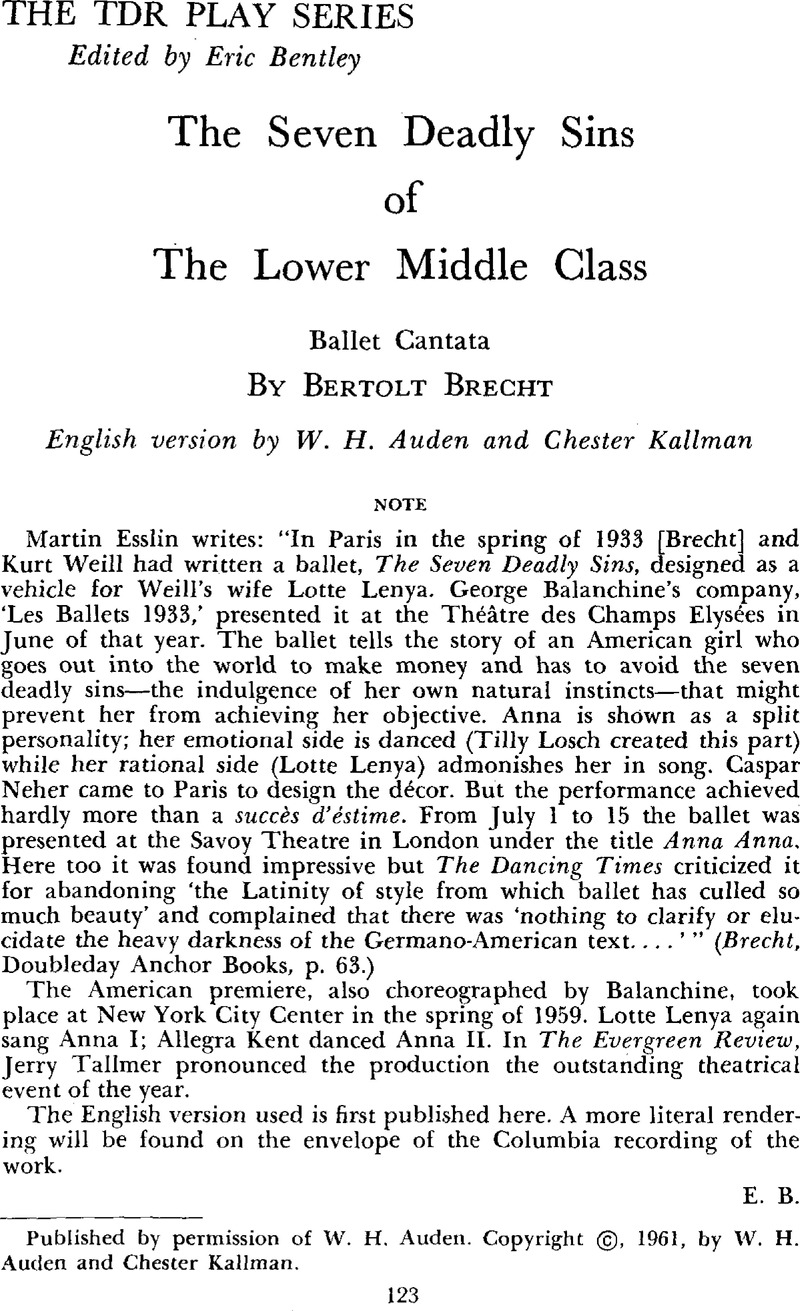Article contents
The Seven Deadly Sins of The Lower Middle Class
Published online by Cambridge University Press: 14 February 2022
Abstract

- Type
- The TDR Play Series
- Information
- Copyright
- Copyright © 1961 The Tulane Drama Review
References
Note
Martin Esslin writes: “In Paris in the spring of 1933 [Brecht] and Kurt Weill had written a ballet, The Seven Deadly Sins, designed as a vehicle for Weill's wife Lotte Lenya. George Balanchine's company, ‘Les Ballets 1933,’ presented it at the Théâtre des Champs Elysées in June of that year. The ballet tells the story of an American girl who goes out into the world to make money and has to avoid the seven deadly sins—the indulgence of her own natural instincts—that might prevent her from achieving her objective. Anna is shown as a split personality; her emotional side is danced (Tilly Losch created this part) while her rational side (Lotte Lenya) admonishes her in song. Caspar Neher came to Paris to design the décor. But the performance achieved hardly more than a succès d'éstime. From July 1 to 15 the ballet was presented at the Savoy Theatre in London under the title Anna Anna. Here too it was found impressive but The Dancing Times criticized it for abandoning ‘the Latinity of style from which ballet has culled so much beauty’ and complained that there was ‘nothing to clarify or elucidate the heavy darkness of the Germano-American text… .’ “ (Brecht, Doubleday Anchor Books, p. 63.)
The American premiere, also choreographed by Balanchine, took place at New York City Center in the spring of 1959. Lotte Lenya again sang Anna I; Allegra Kent danced Anna II. In The Evergreen Review, Jerry Tallmer pronounced the production the outstanding theatrical event of the year.
The English version used is first published here. A more literal rendering will be found on the envelope of the Columbia recording of the work.
- 1
- Cited by




